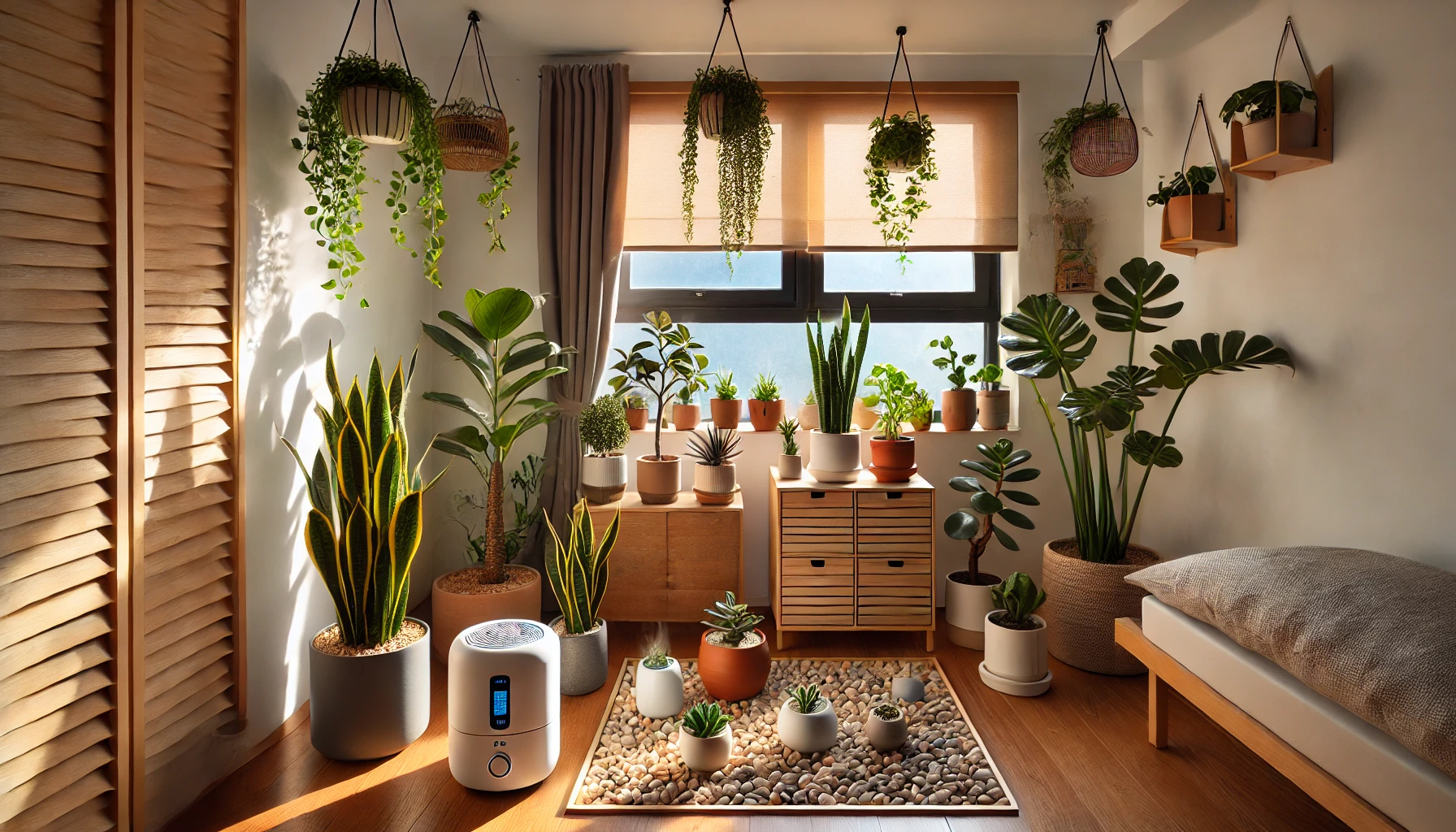Creating the ideal conditions for exotic plants in a small apartment can be a challenge — especially when the indoor environment is dry. Whether you live in an area with a naturally arid climate or your apartment’s heating and cooling systems reduce humidity, there are smart and practical ways to make your space more hospitable for tropical and subtropical greenery.
This guide will show you how to adapt your apartment’s environment to support the healthy growth of exotic plants that crave moisture, warmth, and stable conditions.
Understanding the Needs of Exotic Plants
Exotic plants often come from tropical regions where conditions are vastly different from a modern apartment. They generally require:
- Consistent humidity
- Stable, warm temperatures
- Indirect but bright light
- Moisture-retentive, well-draining soil
- Good airflow without drafts
Adapting your apartment means mimicking these natural conditions without turning your home into a greenhouse.
Dealing with Low Humidity Indoors
Dry air is one of the biggest enemies of exotic plants. Here are several methods to increase humidity without cluttering your space:
1. Use a Humidifier
This is the most effective way to maintain consistent moisture in the air.
- Choose a compact cool-mist humidifier
- Set it near humidity-loving plants (like Calatheas, Alocasias, or ferns)
- Run it during the day when the air is driest
2. Group Plants Together
Grouping creates a microclimate by increasing humidity in the immediate area through transpiration.
3. Place Plants on Pebble Trays
A shallow tray filled with water and pebbles allows for evaporation directly around the plant.
4. Mist Wisely
Occasional misting helps, but overdoing it can cause fungal issues.
- Mist early in the day to allow drying before nightfall
- Avoid misting plants with fuzzy or hairy leaves
Choosing the Right Location Within Your Apartment
Sun exposure, temperature shifts, and airflow vary depending on location.
Ideal Placement Tips:
- Use east-facing windows for soft morning light
- Avoid placing plants directly near radiators or AC units
- Keep them away from drafty windows or doors
- For rooms with no windows, install grow lights on a timer
Boosting Temperature Stability
Some exotic plants dislike sudden temperature changes. Here’s how to manage this:
- Maintain a temperature range of 65°F to 80°F (18°C to 27°C)
- Use thermal curtains in winter to keep warmth inside
- Place plants on plant stands or tables, not directly on cold floors
- Avoid placing pots against cold window panes
Improving Air Circulation (Without Causing Dryness)
Fresh air is important, but in dry climates, too much airflow can dehydrate plants.
Tips for balance:
- Open windows briefly for air exchange, not prolonged drafts
- Use oscillating fans on a low setting to prevent stagnant air
- Avoid placing plants directly in the fan’s path
Potting and Soil Adjustments for Dry Environments
In dry climates, your potting choices can help retain moisture without causing root rot.
Best Practices:
- Use plastic pots inside decorative planters (plastic retains moisture better than clay)
- Choose soil mixes with added coconut coir or peat moss to retain moisture
- Consider adding vermiculite for water retention, but ensure it’s balanced with drainage
Watering Tips in Dry Indoor Conditions
Dry air doesn’t mean overwatering — but it does mean monitoring your plants more carefully.
- Water deeply but less frequently, allowing soil to almost dry before the next watering
- Use a soil moisture meter to avoid guessing
- Water early in the day to avoid overnight root sogginess
- Use room-temperature water to avoid shocking the roots
Best Exotic Plants for Dry Apartment Climates
Some exotic plants are better suited to low-humidity indoor environments than others.
Recommended options:
- ZZ Plant – Virtually indestructible
- Hoya Carnosa – Waxy leaves reduce moisture loss
- Jade Plant – Stores water in its thick leaves
- Snake Plant – Tolerates dry air and low light
- Ponytail Palm – Drought-tolerant and stylish
- Dragon Tree (Dracaena marginata) – Thrives in a variety of indoor conditions
Visual Enhancements and Functional Placement
Small apartments can benefit from well-placed greenery that adds life without cluttering.
Decor tips:
- Use vertical shelving for humid-loving plants grouped together
- Add clear glass terrariums for mini tropical environments
- Try self-watering planters with water reservoirs for consistent hydration
- Use hanging planters in bathrooms or kitchens where humidity is naturally higher
Long-Term Maintenance and Observation
Adaptation is an ongoing process. Watch how your plants react and adjust your care routine accordingly.
- Brown leaf tips usually mean dry air
- Drooping leaves could mean underwatering or drafts
- Yellowing often signals overwatering
- Check the underside of leaves weekly for pests
Keeping a small plant journal or notes app can help you track changes and responses.
Create a Tropical Feel Without the Tropics
With the right tools and techniques, you can successfully grow a variety of exotic plants in even the driest of apartment environments. From using humidifiers and adjusting your watering techniques to choosing smart plant species and rearranging your space — small efforts make a big impact.
Your apartment can become a green oasis, full of vibrant foliage and exotic flair, no matter the climate outside your window.
